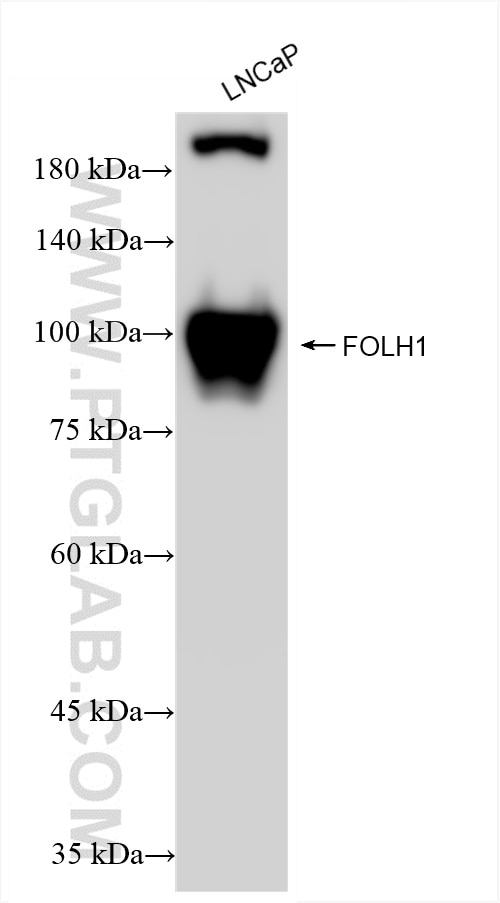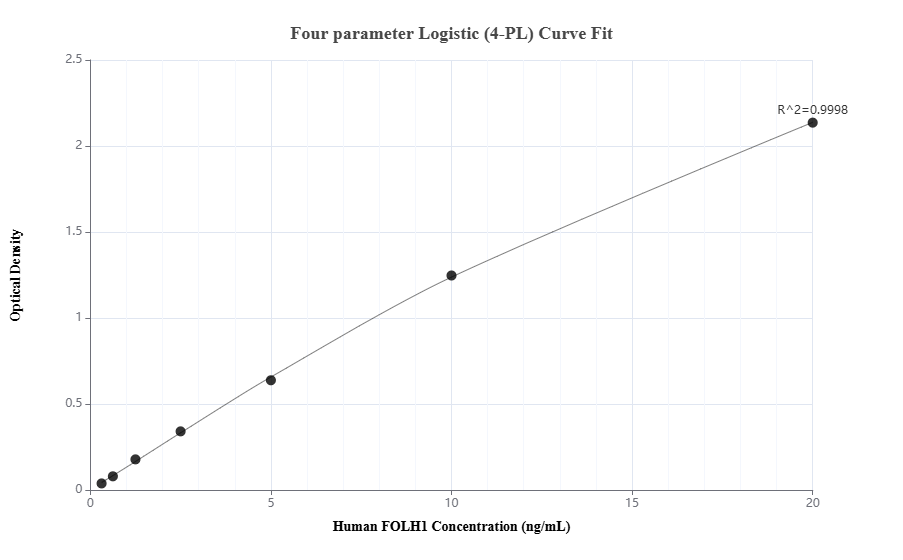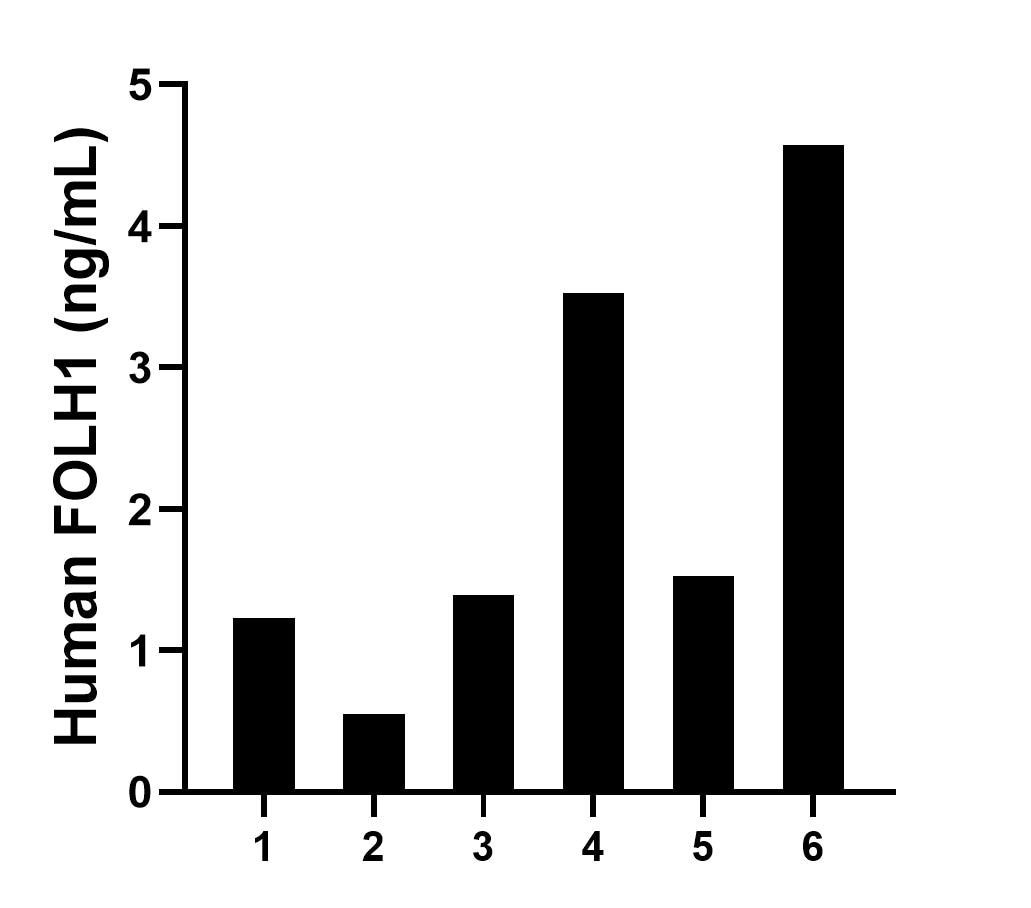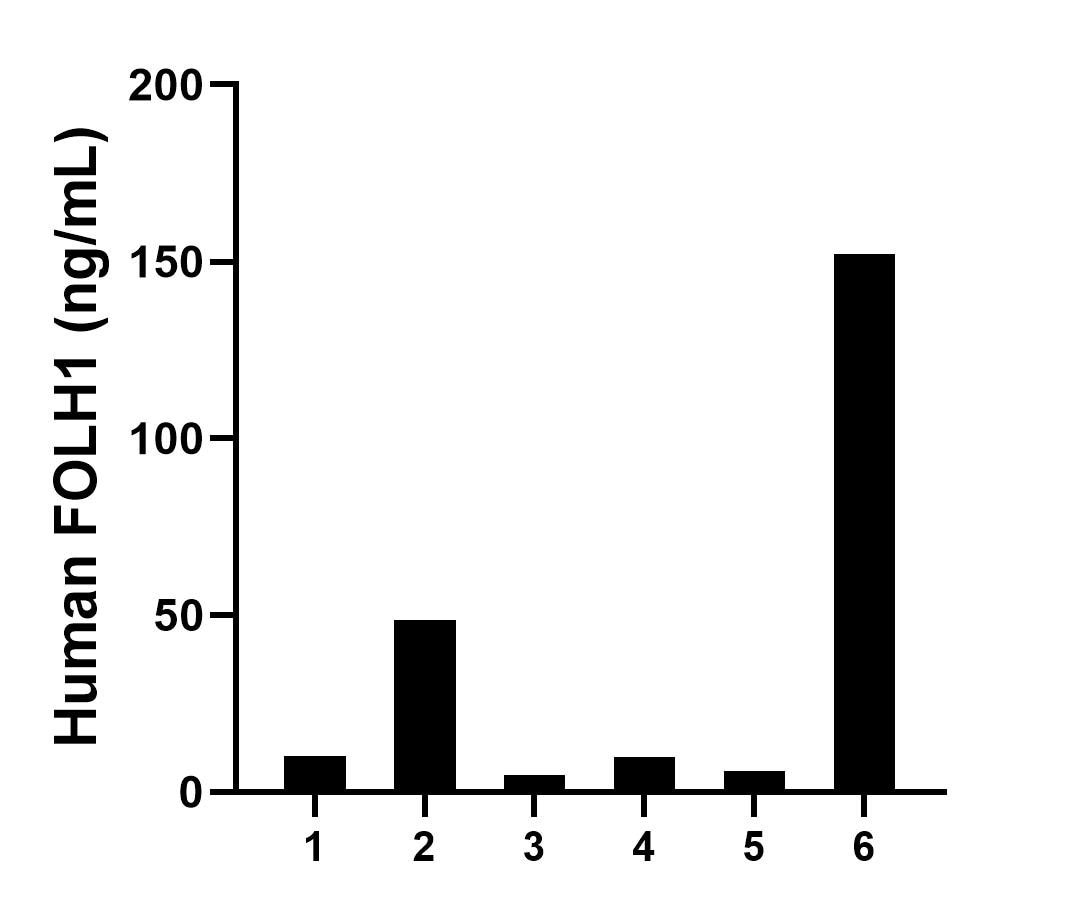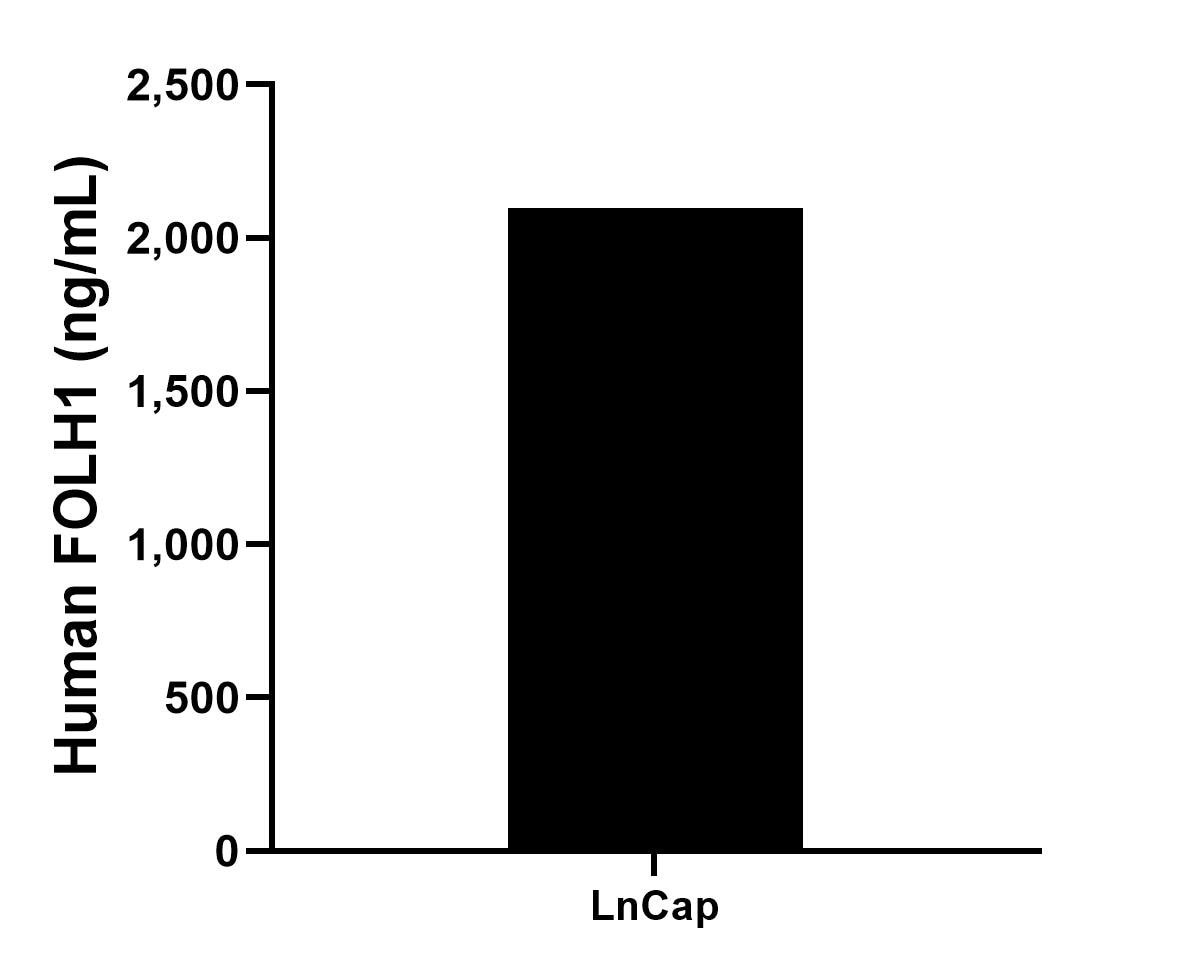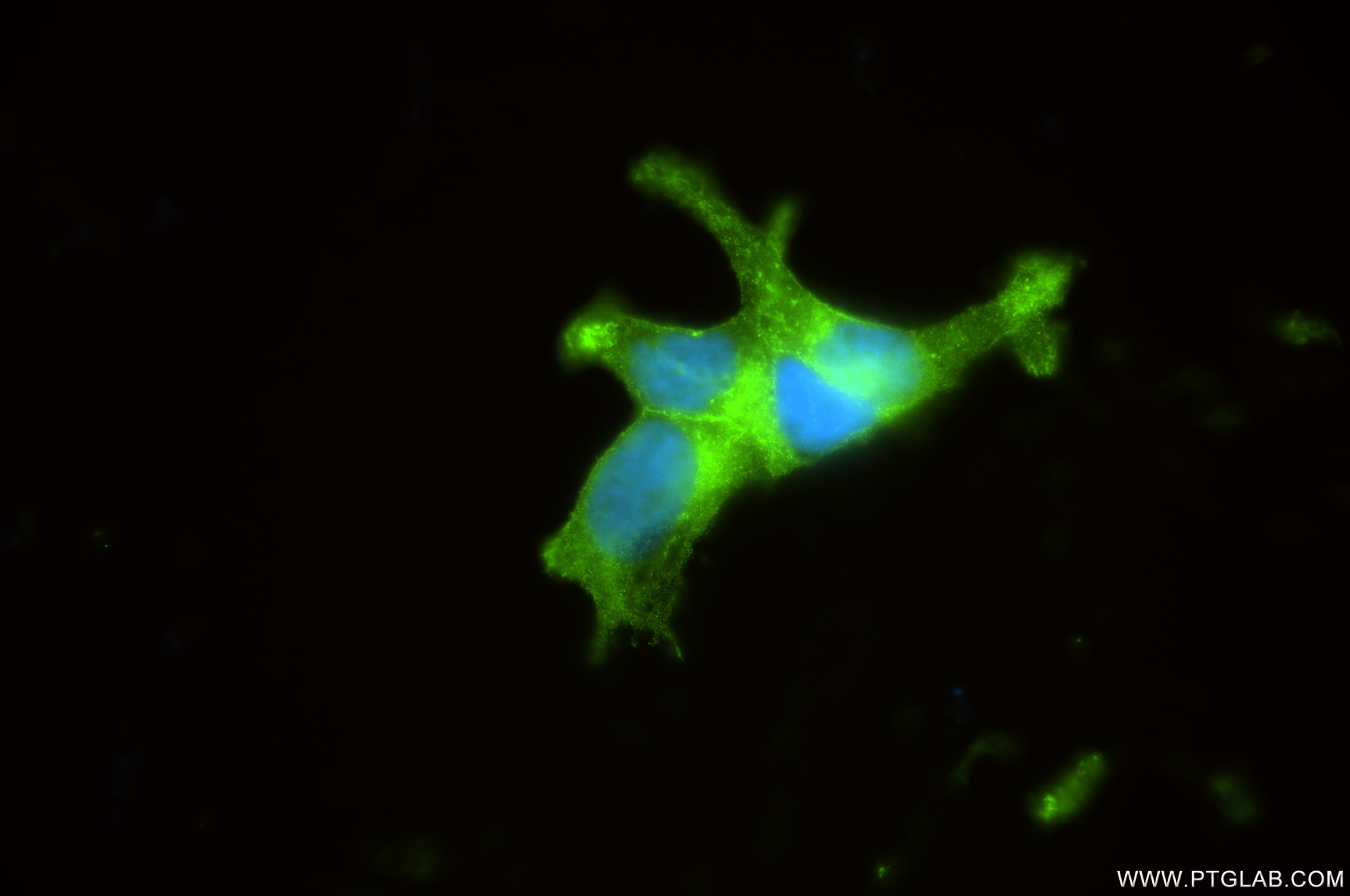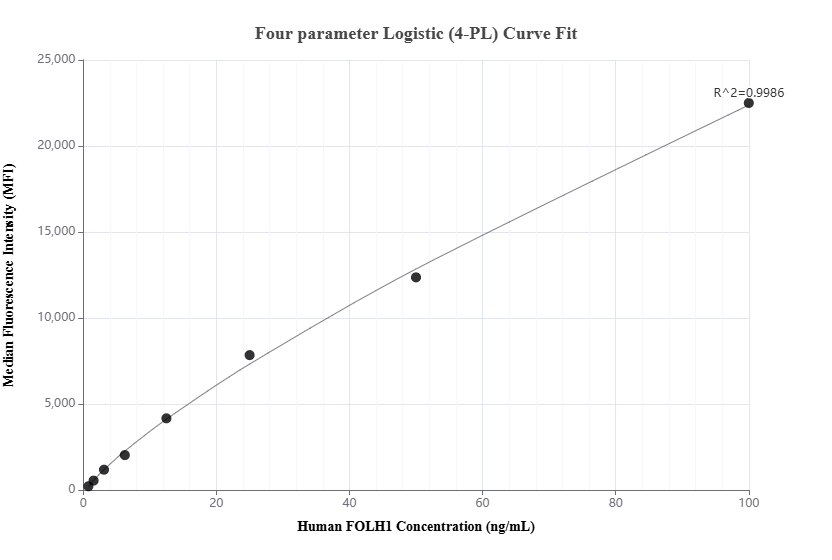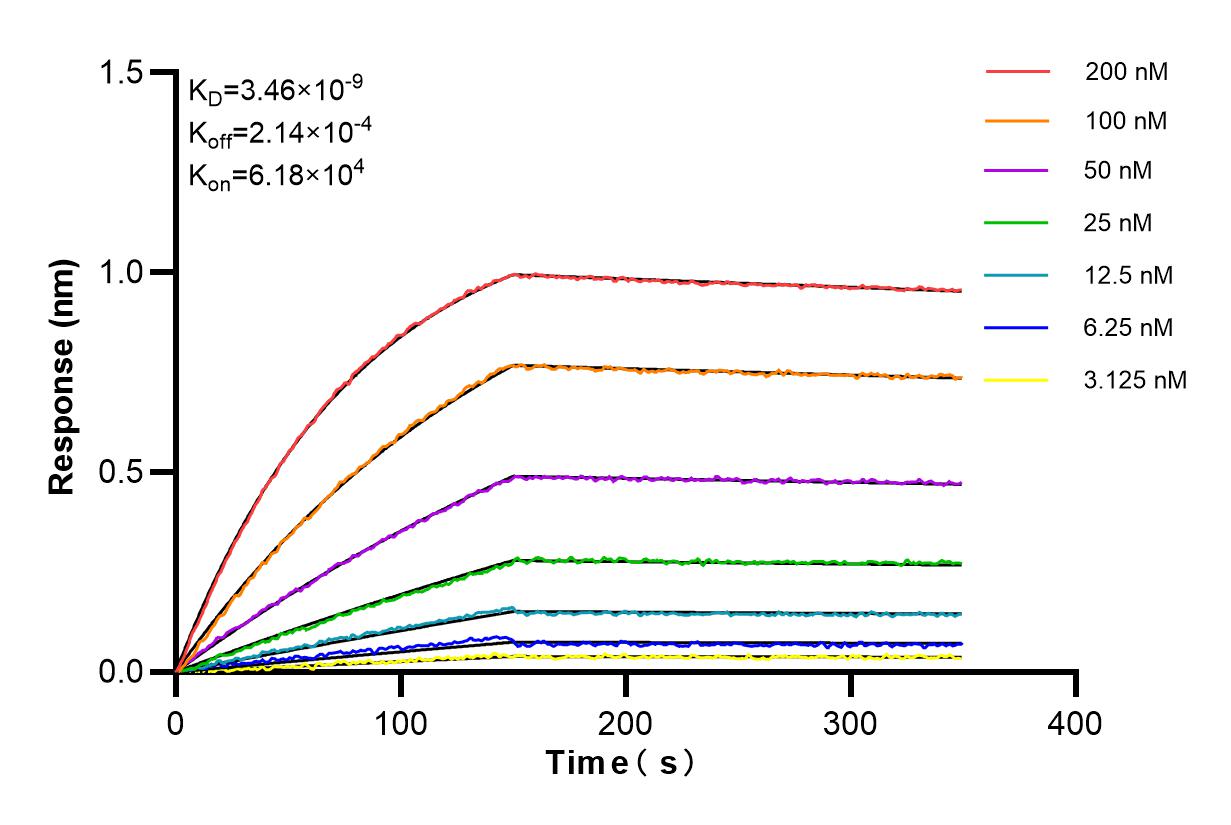Product Information
84615-2-PBS targets PSMA/GCPII as part of a matched antibody pair:
MP01454-1: 84615-2-PBS capture and 84615-1-PBS detection (validated in Cytometric bead array, Sandwich ELISA)
Unconjugated rabbit recombinant monoclonal antibody in PBS only (BSA and azide free) storage buffer at a concentration of 1 mg/mL, ready for conjugation. Created using Proteintech’s proprietary in-house recombinant technology. Recombinant production enables unrivalled batch-to-batch consistency, easy scale-up, and future security of supply.
This conjugation ready format makes antibodies ideal for use in many applications including: ELISAs, multiplex assays requiring matched pairs, mass cytometry, and multiplex imaging applications.Antibody use should be optimized by the end user for each application and assay.
| Tested Reactivity | human |
| Host / Isotype | Rabbit / IgG |
| Class | Recombinant |
| Type | Antibody |
| Immunogen | PSMA/GCPII fusion protein Eg0216 Predict reactive species |
| Full Name | folate hydrolase (prostate-specific membrane antigen) 1 |
| Calculated Molecular Weight | 84KD |
| Observed Molecular Weight | 100 kDa |
| GenBank Accession Number | NM_004476.3 |
| Gene Symbol | PSMA |
| Gene ID (NCBI) | 2346 |
| Conjugate | Unconjugated |
| Form | Liquid |
| Purification Method | Protein A purification |
| UNIPROT ID | Q04609 |
| Storage Buffer | PBS only, pH 7.3. |
| Storage Conditions | Store at -80°C. |
Background Information
Prostate-specific membrane antigen (PSMA), also known as glutamate carboxypeptidase II (GCPII), is a type II transmembrane glycoprotein that has gained significant attention in the field of prostate cancer (PCa) diagnostics and therapeutics. PSMA is highly overexpressed in prostate cancer tissue, especially in aggressive, androgen-deprived, metastatic, and hormone-refractory prostate cancers. Up to 95% of prostate adenocarcinomas express PSMA receptors on their surface. Physiological expression of PSMA is observed in normal prostate epithelium, duodenum, colon, renal tubules, and sympathetic ganglia. It is also found in other tissues such as the salivary glands, lacrimal glands, and various parts of the gastrointestinal tract, though at lower levels.
